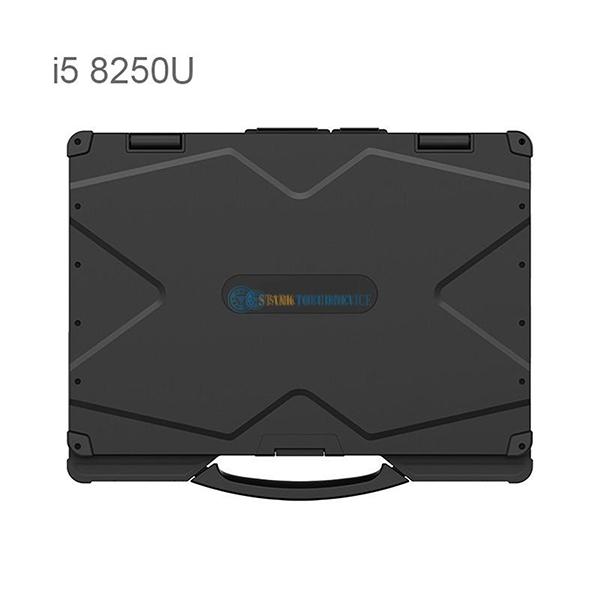Welcome STARK TOUCH DEVICE!
Solutions
Cleaning and maintenance tips for oil stains on industrial control computer fan shafts
Tips for Cleaning and Maintaining Oil Contamination on Industrial Control Computer Fan Shafts
Industrial control computers (ICCs) rely on cooling fans to dissipate heat generated by processors, power supplies, and other components. Over time, fan shafts can accumulate oil contamination from lubricants, environmental dust, or industrial residues, leading to reduced performance, increased noise, or premature failure. Proper cleaning and maintenance of fan shafts are critical to ensuring reliable operation. This guide provides actionable techniques for addressing oil contamination on ICC fan shafts.

Identifying Oil Contamination Sources and Symptoms
Understanding where oil contamination originates and recognizing early signs of issues helps technicians take proactive measures.
Common Sources of Oil Contamination
Fan shafts may accumulate oil from several sources. Factory-applied lubricants on fan bearings can migrate outward over time, especially in high-temperature environments. Industrial settings with airborne oil mist, such as metalworking shops or automotive facilities, expose fans to external oil particles. Additionally, improper maintenance practices, like using oil-based cleaning agents near fans, can introduce contaminants.
Signs of Contaminated Fan Shafts
Early detection of oil contamination prevents further damage. Symptoms include unusual grinding or whirring noises during fan operation, indicating increased friction on the shaft. Fans may also spin slower than usual or struggle to start, suggesting lubricant breakdown or blockage. In severe cases, fans may stop entirely, triggering overheating alerts in the ICC. Visual inspection might reveal a sticky or greasy residue around the shaft or bearing housing.
Safe Disassembly and Preparation for Cleaning
Before cleaning, proper disassembly ensures access to the fan shaft without damaging components.
Powering Down and Isolating the ICC
Always shut down the ICC and disconnect it from power sources before handling fans. This prevents electrical shocks and avoids accidental damage to sensitive electronics. For systems in critical operations, schedule maintenance during planned downtime to minimize disruptions.
Removing the Fan Assembly
Locate the fan assembly, typically secured by screws or clips on the ICC chassis. Use appropriate tools, such as a Phillips screwdriver or plastic spudger, to avoid stripping fasteners. Gently detach the fan from its mounting, noting any cable connections for power or speed sensors. Label cables if necessary to ensure correct reassembly.
Protecting Surrounding Components
Place the removed fan on a clean, static-free surface, such as an antistatic mat or clean cloth. Cover nearby ICC components with protective covers or plastic sheets to prevent accidental contact with cleaning agents or debris. This step is crucial in environments with sensitive electronics or optical sensors.
Cleaning Techniques for Oil-Contaminated Fan Shafts
Effective cleaning removes oil residues without damaging the shaft or bearing. The following methods address varying levels of contamination.
Using Isopropyl Alcohol (IPA) for Light Contamination
For minor oil buildup, dampen a lint-free microfiber cloth or cotton swab with 70-90% isopropyl alcohol (IPA). Gently wipe the fan shaft in a circular motion, focusing on areas with visible residue. Avoid excessive force, as this may push contaminants deeper into the bearing. Allow the shaft to air-dry completely before reassembly. IPA evaporates quickly and leaves no residue, making it ideal for electronic components.
Applying Degreasers for Stubborn Residues
Heavier oil contamination may require a water-based or citrus-based degreaser. Apply a small amount to a soft-bristled brush, such as an old toothbrush, and scrub the shaft gently. Work in sections to avoid spreading the oil. After scrubbing, wipe the shaft with a damp cloth to remove degreaser traces, then dry thoroughly. Ensure the degreaser is compatible with plastics and metals used in the fan assembly to prevent corrosion.
Utilizing Compressed Air for Hard-to-Reach Areas
After cleaning, use compressed air to dislodge any remaining debris from the shaft or bearing housing. Hold the can upright and use short bursts to avoid condensation buildup. Angle the nozzle to blow dust out of crevices rather than pushing it further inside. This step is particularly useful for fans with enclosed bearings or complex geometries.
Reassembling and Testing the Fan Post-Cleaning
Proper reassembly ensures the fan operates smoothly after cleaning.
Lubricating the Shaft (If Necessary)
Some fans require periodic relubrication to maintain optimal performance. If the manufacturer’s guidelines recommend lubrication, apply a single drop of synthetic bearing grease or lightweight machine oil to the shaft. Avoid over-lubricating, as excess grease can attract more dust and oil. Use a precision applicator, like a syringe or needle-tipped bottle, for controlled dispensing.
Reinstalling the Fan Assembly
Align the fan with its mounting holes and secure it using the original screws or clips. Reconnect any cables, ensuring proper orientation to avoid pinching or stretching. Double-check that all connections are firm but not overtightened, which could damage connectors.
Conducting Functional Tests
Power on the ICC and monitor the fan’s operation. Listen for unusual noises or vibrations, which may indicate incomplete cleaning or misalignment. Use system monitoring tools to check fan speed and temperature readings. If issues persist, repeat the cleaning process or inspect for deeper mechanical problems, such as worn bearings.
By following these steps, technicians can effectively clean and maintain oil-contaminated fan shafts on industrial control computers, ensuring reliable cooling and extending component lifespan.


